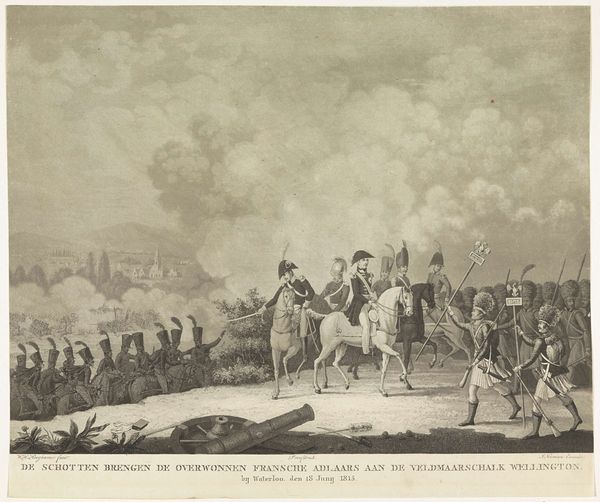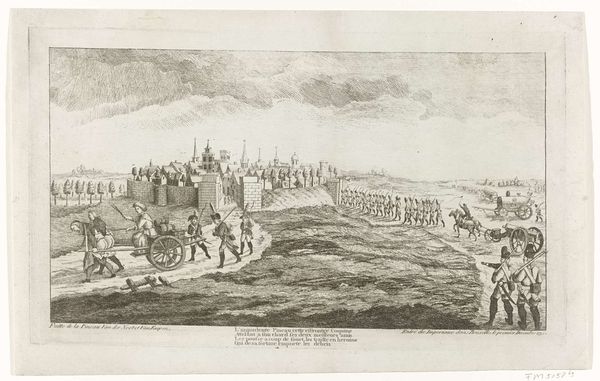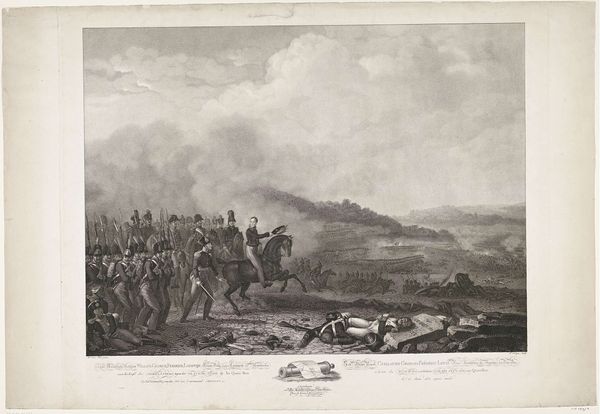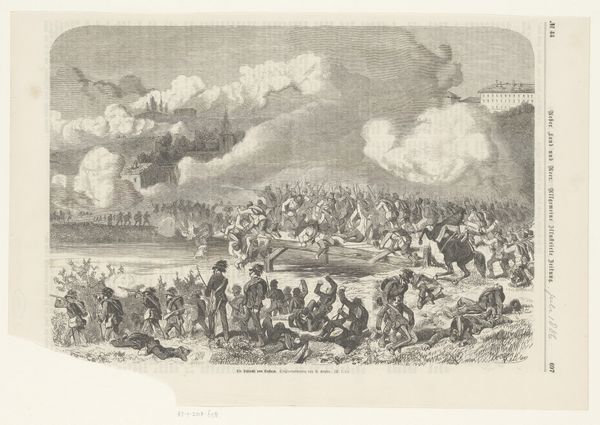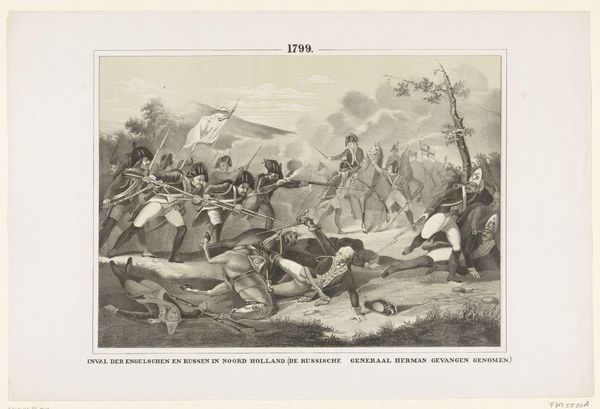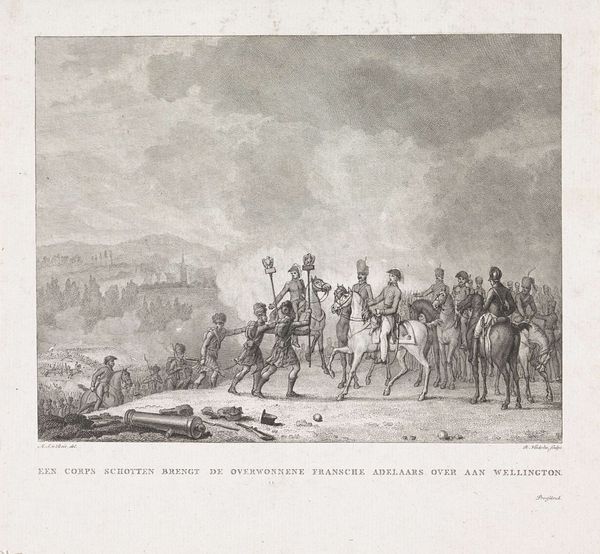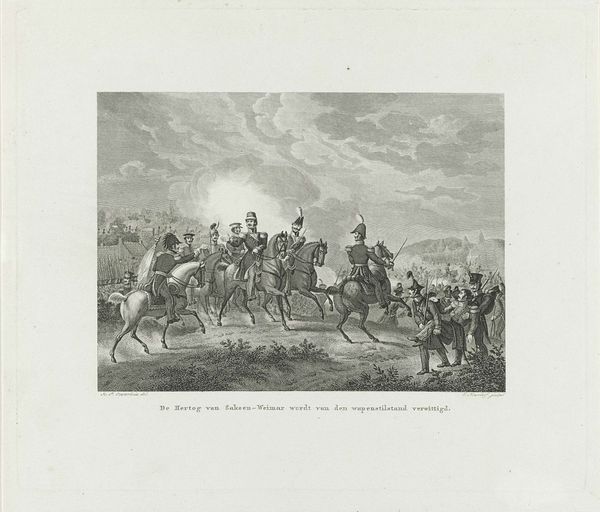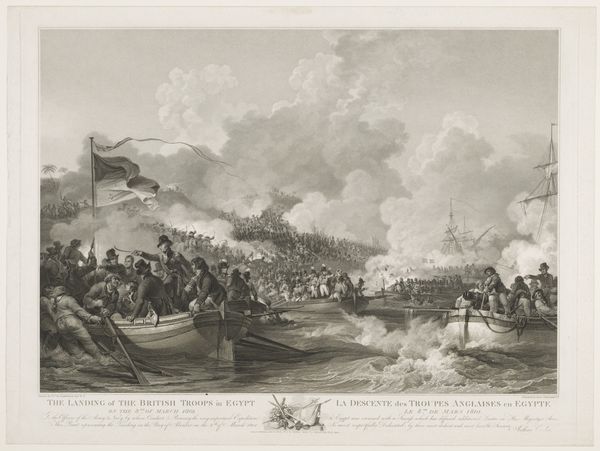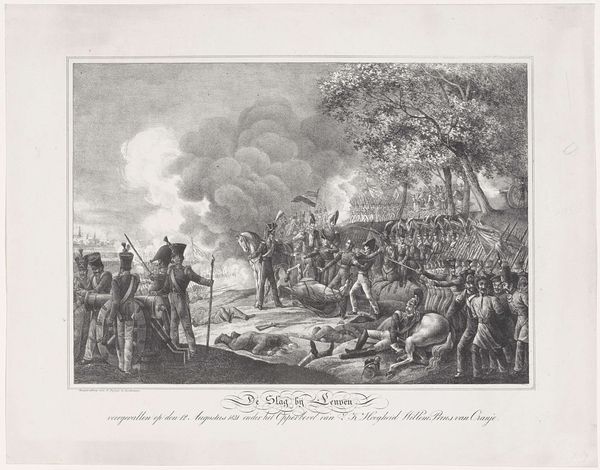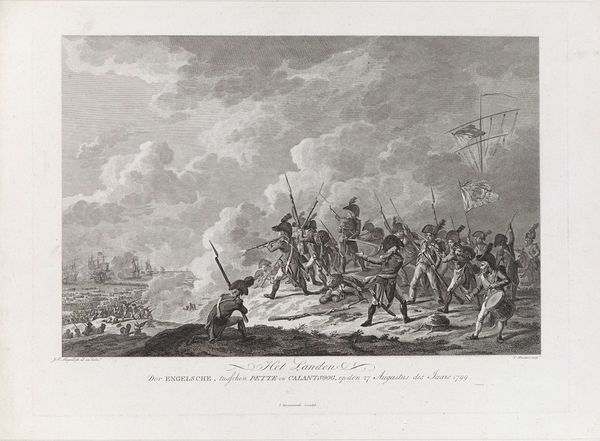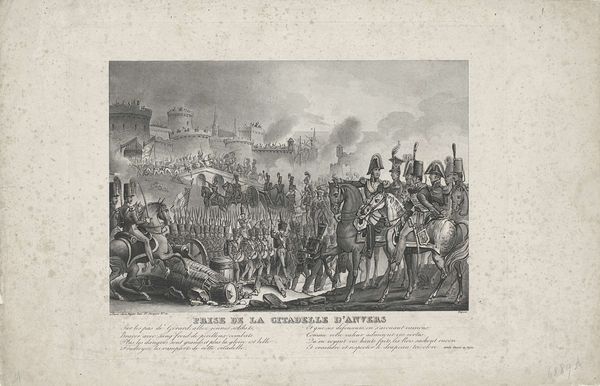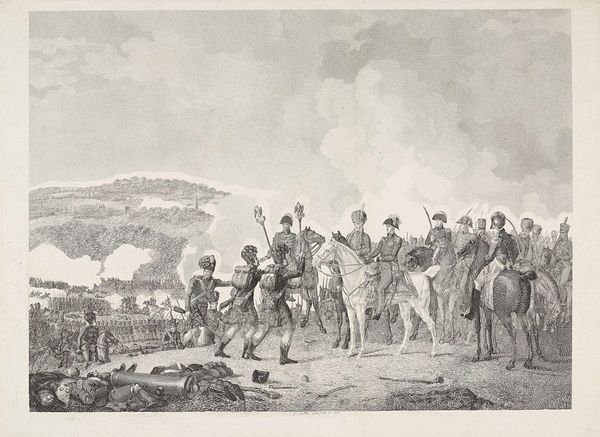
Prins van Oranje leidt de Nederlandse troepen bij Quatre-Bras, 1815 1815
0:00
0:00
print, engraving
# print
#
old engraving style
#
landscape
#
romanticism
#
history-painting
#
engraving
Dimensions: height 360 mm, width 428 mm
Copyright: Rijks Museum: Open Domain
Editor: So, here we have "Prins van Oranje leidt de Nederlandse troepen bij Quatre-Bras, 1815," or "Prince of Orange Leads the Dutch Troops at Quatre Bras, 1815," an engraving by Willem Hendrik Hoogkamer, housed here at the Rijksmuseum. I’m immediately struck by the Romanticized portrayal of battle – the chaos mixed with a clear sense of Dutch heroism. What do you see in this piece? Curator: For me, this engraving highlights the role of art in constructing national narratives. Consider the moment: 1815. Napoleon's defeat was still fresh. Images like these served a purpose, a public function. They solidify a national identity around events, and most importantly people, like the Prince. Editor: So, you’re saying it's less about historical accuracy and more about…nation-building through art? Curator: Exactly! The visual composition itself promotes this. Note the Prince's heroic pose on horseback, contrasted with the implied disarray of the French forces. Consider who this work would be circulating among; a public eager to embrace a new sense of Dutch pride. Editor: I hadn't considered how actively prints like these were used to shape public opinion at the time. Are there other details in the engraving that contribute to this narrative? Curator: Absolutely. Observe the fallen soldiers in the foreground; though casualties of war, their sacrifice is framed as essential to this Dutch victory. The deliberate emphasis on "Neerlands Onsterfelijke Krijgsheld," translated as "Netherlands' Immortal War Hero," in the title underscores the intent to cement Orange's legacy and the Dutch martial spirit. How do you see this impacting later depictions of Dutch history? Editor: I now recognize how powerful visual imagery can be to promote a very particular reading of history. Thanks. Curator: It’s crucial to remember the socio-political forces that shape both the creation and the reception of art like this. The art serves the function of promoting heroism for political gain.
Comments
No comments
Be the first to comment and join the conversation on the ultimate creative platform.
